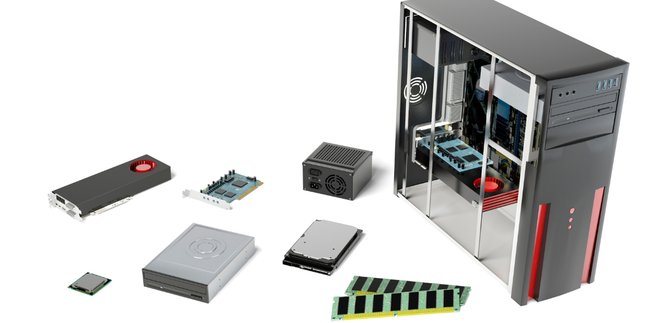Kapanlagi.com - Features are crucial elements in the world of technology that differentiate one product or service from another. In general, a feature can be defined as a unique characteristic or special capability possessed by a product, application, or system. Features are designed to meet specific user needs, enhance functionality, and provide added value that makes a product stand out among its competitors.
The development of technology has transformed the concept of features from what was initially just basic functions to more complex and integrated elements. Now, features such as artificial intelligence and virtual reality offer deeper and more personalized experiences for users.
These features not only add to the appeal of a product but also serve as significant differentiating factors in a highly competitive market, thus influencing purchasing decisions and user satisfaction levels. Understanding features is essential for developers, marketers, and consumers, as reported by Kapanlagi.com from various sources on Monday (25/11).
1. Types of Features
In the world of products and applications, features can be divided into several main categories that enhance value and usability. Functional features are the core of the product, allowing users to perform essential tasks. Convenience features simplify the user experience, such as keyless entry systems in cars. Security features protect users and data, for example, facial recognition.
Customization features provide the freedom to tailor the product, while integration features connect various devices and applications. Analytics features provide insights into product usage. Understanding these types of features is important for developers and consumers to create comprehensive solutions and make informed purchasing decisions. The right combination of features can result in a product that stands out in the market.
2. Benefits of Features
Features in products and applications are at the core of a satisfying user experience and can significantly enhance productivity. For example, automation in spreadsheet applications and keyboard shortcuts speed up workflows. Personalization recommendation features help users find content to their liking, while unique features like high-quality cameras attract consumer attention in a competitive market.
Adaptability and flexibility of features meet diverse needs, and security features provide a sense of safety. All of this demonstrates that features are key to creating added value, meeting user expectations, and building loyalty and long-term success for companies.
3. Features vs Functions: What's the Difference?
In product development and marketing, features and functions are often misunderstood. A feature is a specific characteristic of a product, such as a 108MP camera on a smartphone, which answers the question "What can this product do?".
On the other hand, function refers to the primary purpose of the product, such as the ability to take high-quality photos. Understanding this difference is important, as features should support functions to make the product valuable to users. The balance between features and functions is key to meeting user expectations and delivering real value.
4. Tips for Choosing the Right Features
Choosing the right features for your product or application is key to success in a competitive market. First, identify user needs and desires through surveys, interviews, and data analysis. Focus on the core functions that support the main goals of the product, and ensure that the features are easy to use, avoiding complexities that could detract from value.
Evaluate the costs and benefits of each feature, and look for ways to differentiate your product from competitors with unique innovations. Don't forget the importance of security and privacy, as well as seamless integration with other systems. After launch, continue to listen to user feedback for ongoing improvements, and remember not to overwhelm the product with unnecessary features.
With the right approach, you will not only capture user attention but also build a strong foundation for long-term success.
5. Product Feature Development
Product feature development is a challenging journey that involves many steps and considerations, starting from identifying unmet user needs to launching a feature that is ready for use. This process begins with an in-depth analysis of user feedback and market research, followed by brainstorming sessions to explore innovative ideas.
After setting priorities, the team will design and thoroughly test the feature before finally launching it to the public. However, challenges such as maintaining a balance between innovation and usability, as well as ensuring user security and privacy, must be faced with best practices that emphasize collaboration among teams.
In a constantly changing world, innovation is key to staying competitive, with approaches like design thinking and A/B testing that can help create features that are not only functional but also appealing to users.
6. Latest Features in Technology
In an era of rapidly evolving technology, innovation continues to enrich our interactions with devices and applications. Artificial intelligence (AI) and machine learning are in the spotlight, bringing intelligent virtual assistants and personalized content. Augmented reality (AR) and virtual reality (VR) create immersive experiences in shopping and learning, while the Internet of Things (IoT) connects devices in the home to enhance security and energy efficiency.
The presence of 5G enables 8K video streaming and high-quality gaming without interruptions. Users now have better control over their personal data, and health technology is becoming more sophisticated with features like fall detection. Innovations in audio, displays, as well as advancements in batteries and charging also extend device longevity. All of this shows that the future of technology offers great potential to improve quality of life.
7. The Impact of Features on User Experience
(kpl/rao)
Disclaimer: This translation from Bahasa Indonesia to English has been generated by Artificial Intelligence.












